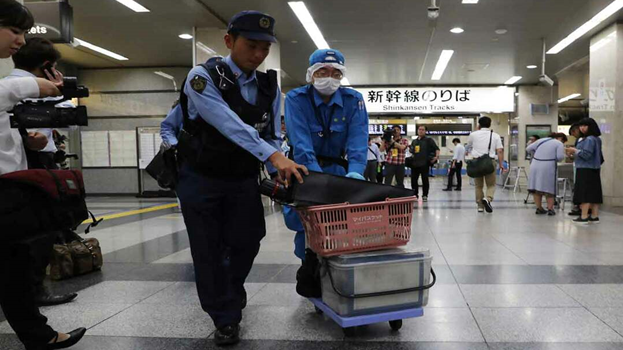“Collapse of Safety Myth? : New Trend of Baggage Checks in Shinkansen”

The Shinkansen is an indispensable transportation system in Japan, carrying approximately 500,000 passengers per day and connecting Japan’s east and west sides. As of May 2022, there have been zero fatalities resulting from the Shinkansen system itself, including derailment accidents. However, this does not mean that there have been no fatalities in Shinkansen-related incidents. There have indeed been tragic accidents, such as falls from station platforms and suicides involving jumpers.
(figure: Stations at the time of the killings on the Shinkansen bullet train)

(source: DIAMOND online)
In 2015, a suicidal passenger was doused with gasoline, set himself on fire, and burst into flames inside a Tokaido Shinkansen train. Three years later, in 2018, another murder occurred inside a Tokaido Shinkansen train. The perpetrator with a machete cut into another passenger nearby, resulting in a vicious incident that injured two people and killed one.
Against this background, security measures on Shinkansen trains are now urgently needed in Japan. In response to this incident, various measures have been implemented, such as posting security guards inside the trains and installing surveillance cameras. However, the most effective measure to prevent such incidents, passenger baggage screening, has not yet been implemented on Japan’s Shinkansen trains.
Unlike airplanes, Japan’s Shinkansen trains are regarded as user-friendly because they do not have baggage inspections. If this advantage is lost, it will lead to passenger dissatisfaction and one advantage of the Shinkansen will be lost. Therefore, “baggage screening” has been regarded as a very high hurdle on Shinkansen trains.
However, in 2018, the year of the above incident, a venture company developed a system that may break this common practice. The company has developed a “new type of X-ray detector that can inspect baggage in 4 seconds.
It takes about 2 seconds to pass through a railroad ticket gate. The introduction of this system will result in a time lag of about 2 to 3 seconds, but the company believes that this amount of time will not cause extreme inconvenience to passengers. The new X-ray inspection system is expected to revolutionize security measures without interfering too much with the convenience of the Shinkansen.
(Figure: Nuclear power plant under construction by Hitachi GE:)

(Source: Hitachi GE official HP)
However, there is one thing that concerns me about this story. A well-known story related to the radiation industry is that “concessions related to companies that handle radiation” are often discussed.
It is a well-known fact that only a limited number of companies deal with radiation and that these companies have very strong authority over radiation-related technologies and supply chains. In other words, the endorsement of these companies determines whether a newly developed radiation technology will see the light of day.
The members of the venture firms mentioned in this article are related to the corporate advisors and “males” of the radiation industry. What does this mean? ……
There are reports that the new X-ray detector will be exhibited at the Osaka-Kansai Expo to be held in 2025 at the earliest. We will keep an eye on it.
Hiroto HARIMA
Analyst, Global Intelligence Group (GIG)
(reference)



